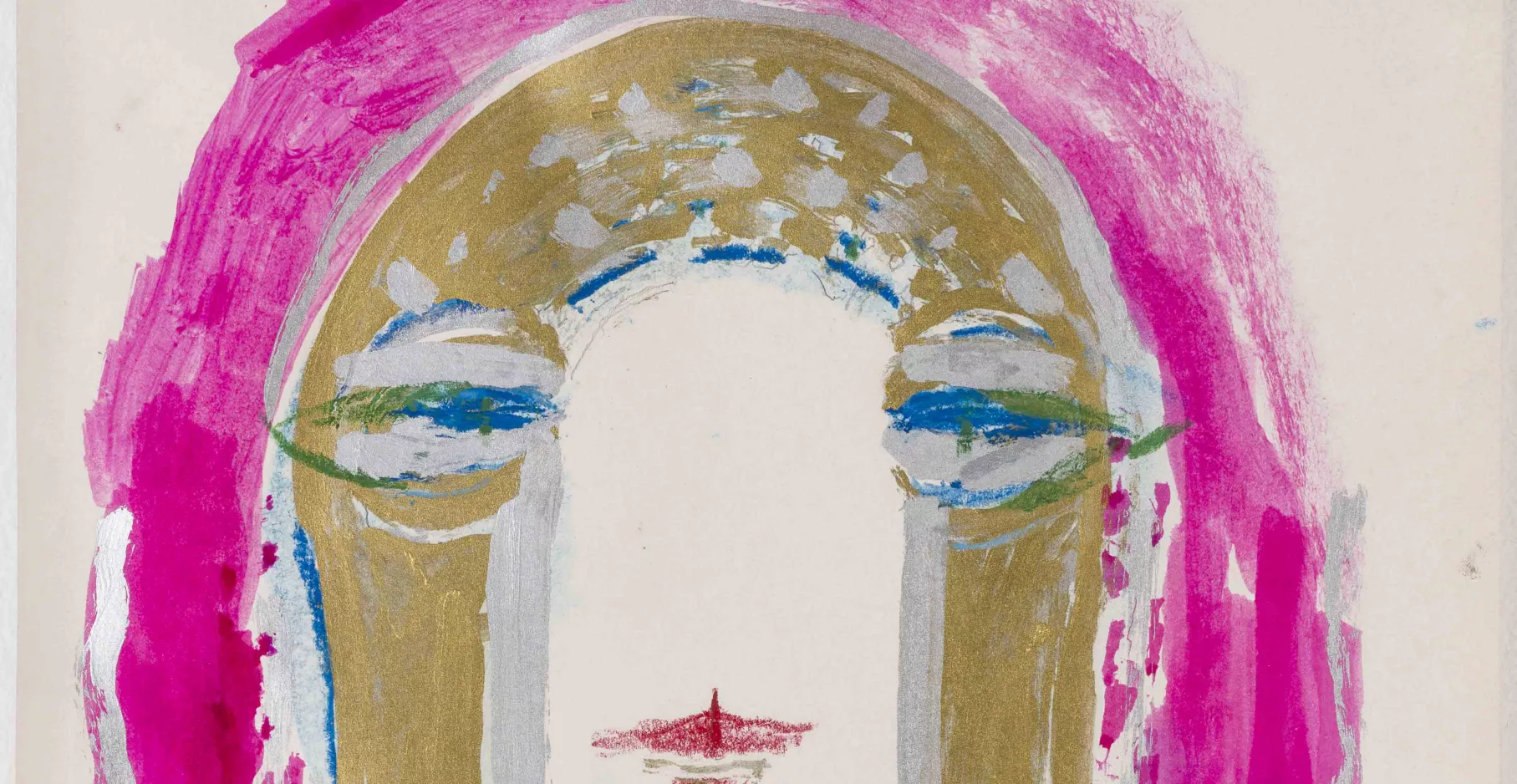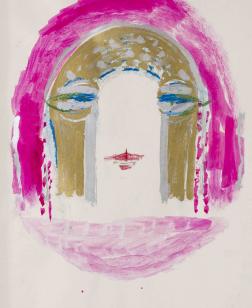Marisa Merz
Ascoltare lo spazio


Marisa Merz
Ascoltare lo spazio
From 3 May
to 22 September 2024


From 3 May
to 22 September 2024
The LaM is devoting a major exhibition to the Italian artist Marisa Merz (1926 - 2019), the first retrospective in France for 30 years (Centre Pompidou, 1994) and the first exhibition in a French public institution for almost 15 years (Vassivière Island CIAP, 2010).
Celebrated in 2013 by the award of a Golden Lion at the Venice Biennale, Marisa Merz was one of the leading artists on the Italian and international art scene and closely affiliated with the Arte Povera group. Thanks to the Fondazione Merz’s collaboration and commitment, the LaM will present a selection of iconic works alongside previously unseen pieces, as well as major research work carried out in the archives.
03.05.2024 > 22.09.2024
Tuesday to Sunday
from 10 am to 6 pm
Full price : 11 €
Reduced price** : 8 €



Marisa Merz, Sans titre, s.d. Technique mixte sur papier de riz monté sur cadre en plexiglas ; 45,5 x 32,5 cm. Collection particulière, Paris. Courtesy Etienne Bréton / Saint-Honoré Art Counsulting. © Adagp, Paris, 2024. Photo : Boris Kirpotin
Marisa Merz was born in 1926 in Turin, where her teenage years saw her familiarising herself with a cultural environment characterised by experimentation, until the first presentation of her Living Sculptures – works created out of aluminium foil – in 1967, held in her own house and at the Gian Enzo Sperone gallery in the same city. Often presented as the only woman in the Arte Povera group1, Marisa Merz appropriated a number of its codes and concerns – its interest in raw materials, sculpture’s relationship with space and art’s relationship with life – without actually becoming a fully fledged member. Developing a substantially autonomous position, she spent over fifty years producing a resolutely open body of work.
In her studio, Marisa Merz transformed space and time into a great collage, navigating between numerous references, images and expressions of art history along with a wide variety of everyday objects and materials from aluminium to clay, copper to nylon, and wax to fabric. A radically personal expressive repertoire in which high and popular culture, art materials and everyday objects mingle with each other to form a strangely powerful body of work as intimate as it is extraordinary.
Marisa Merz worked in series, creating ephemeral works undergoing continuous change and returning repeatedly to the same motifs, materials and techniques in order to get as close as possible to their essence. She explored her subjects through constant subtle variations from one work to the next, playing on scales, shapes, materials, colours and surface effects. As a result, the many faces that she modelled in wax, clay and plaster, covered with pigments, gold leaf or copper wire, and drew tirelessly on all types of mediums – from wooden boards to sheets of paper – have the same dynamic uncertainty and power of attraction as those by such artists as Medardo Rosso and Amedeo Modigliani. Well aware that painting is a language with a memory, she was able to trace its history, stretching from Byzantine icons to the most radical of religious paintings, by Fra Angelico and Antonello da Messina, while nonetheless tracing a history that belonged to her alone.

Marisa Merz, Sans titre, s. d. Techniques mixtes sur carton gris pressé ; 101, x 70,5 x 0,3 cm. Collection Merz. © Adagp, Paris, 2024. Photo : Renato Ghiazza

Marisa Merz, Sans titre, s. d. Argile non cuite, bobine de fil de cuivre ; 32 x 22 x 22 cm. Collection Merz. Courtesy Fondazione Merz © Adagp, Paris, 2024. Photo : Renato Ghiazza

Marisa Merz, Sans titre, s. d. Techniques mixtes sur papier, fil de cuivre ; 150 x 209 cm. Collection Merz. Courtesy Fondazione Merz - Gladstone Gallery, New York - Thomas Dane Gallery, Londres © Adagp, Paris, 2024. Photo : M3Studio
Although, for Marisa Merz, “l’occhio guida la mano” [the eye guides the hand], she also wrote, “Ad occhi chiusi gli occhi sono straordinariamente aperti” [When the eyes are closed, they are extraordinarily open]. Hence, her body of work’s subtle power is expressed in this vision nourished by the inner self, in her relationship with the reflexive dimension of solitary work in the studio, with silence, with the poetry that reveals itself in the tiniest details, her quest for the overwhelming fragility of art, which is also that of life.
There are no works by Marisa Merz in France’s public collections. The LaM is therefore providing almost all its visitors with fresh discoveries by presenting some hundred works, a number of which will be on display to the public for the very first time. The exhibition, which is based on in-depth work carried out in the archives, is also organised as an investigation that not only examines her almost totally elusive artistic practice, but also the choices and methods required to develop the possibility of a testimony, and a retrospective.
A catalogue is set to be co-published with Éditions Fonds Mercator, comprising previously unpublished essays by Sébastien Delot, Marianna Vecellio and Andrea Viliani, republished texts by the artist, a chronology drawn up by Grégoire Prangé and numerous archival documents.
Sébastien Delot, Director of Collections and Mediation, National Picasso Museum-Paris.
Grégoire Prangé, Exhibition curator, in charge of curatorial coordination, LaM.
Andrea Viliani, Director of the Museo della Civiltà, Rome.
Prendre l'autoroute Paris-Gand (A1/A22/N227)
Sortie 5 ou 6 Flers / Château / Musée d’art moderne

Métro ligne 1 - Station Pont de Bois
+ Bus Liane 6, direction Villeneuve d'Ascq Contrescarpe
ou Bus ligne 32, direction Wasquehal Jean-Paul Sartre
Arrêt L.A.M.
Métro ligne 2 - Station Fort de Mons
+ Bus Liane 6, direction Villeneuve d'Ascq Contrescarpe
Arrêt L.A.M.
Métro ligne 2 - Station Jean Jaurès
+ Bus ligne 32, direction Villeneuve d'Ascq Hôtel de Ville
Arrêt L.A.M.
Un parking à vélo vous est proposé à l'entrée du parc du musée
La carte « La MEL à Vélo », édition 2017-2018, vous informe sur les aménagements cyclables, stations V'lille, itinéraires conseillés... Élément indispensable à mettre dans toutes les sacoches, elle réunit l'ensemble des informations dont vous pouvez avez besoin lors de votre trajet en vélo
L'entrée principale du LaM est située en contrebas du parking P8, à proximité immédiate du rond-point situé au bout de l'allée du Musée
Deux parkings publics (non surveillés) sont disponibles pour garer vos véhicules :
- le parking P7 (dit Des moulins, véhicules de + de 1,8 m)
- le parking P8 (hauteur maxi : 1,8 m), à proximité immédiate de l'entrée principale du musée, mais de moindre capacité que le P7
Pour les bus, un dépose-minute est situé sur l'avenue de Canteleu
Les emplacements de parking réservés P.M.R. se situent juste avant le rond-point de l’allée du Musée, face au pavillon d’entrée du LaM